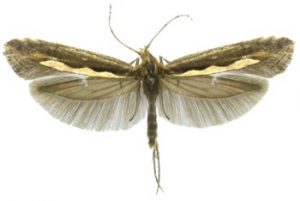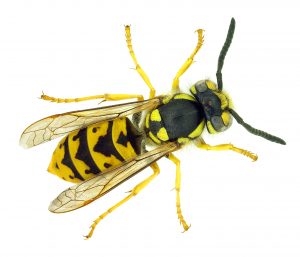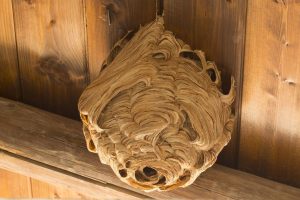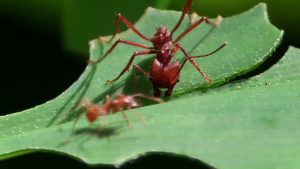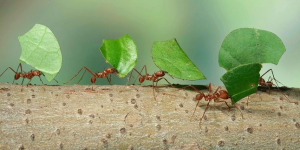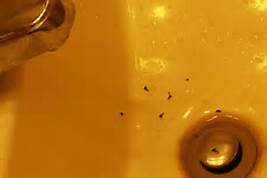Flies can be spotted all over the world, both in the outside environment and indoors. The prominent areas where flies are found are in close proximity to humans and animals. They are attracted to different filthy surfaces.
Many different types of flies can be found in homes and buildings where humans are present. Unlike the outdoor locations, indoor fly sustenance is gained through decomposing trash and other food waste. Moist, damp food provide the fly with the nutrition it needs, which is why the decaying organic material is the ideal meal. In homes, the temperature tends to speed up the decomposition process, providing the right  environment for a fly’s food to spoil, as well as for the insect to thrive. During the day, flies are most active during the hottest hours, as the rate of decomposition of their food sources speeds up, making the scents more appealing and pungent, and creating an environment ideal for a large fly population. In homes and barns, they can be found near or in ceilings. Wires and beams are typical resting locations for the flies during the nighttime hours.
environment for a fly’s food to spoil, as well as for the insect to thrive. During the day, flies are most active during the hottest hours, as the rate of decomposition of their food sources speeds up, making the scents more appealing and pungent, and creating an environment ideal for a large fly population. In homes and barns, they can be found near or in ceilings. Wires and beams are typical resting locations for the flies during the nighttime hours.
There are four stages in the life cycle of a fly. They begin as eggs being laid in decaying matter, which hatch to a long, whitish yellow maggot (larvae) stage within 8 to 20 hours. The larvae stage takes between four and thirteen days, but only within the optimal temperature range. The third stage is the pupa. During this time, the insect completes the development stage inside its new casing – this time a dark brown color. In between two and six days, the fly will break free into the adult stage and begin the process again.
One of these flies is the Blandford fly. It belongs to the species of the black fly; a biting insect. The Blandford fly’s English common name derives from a major outbreak of people being bitten around the town of Blandford Forum in Dorset, England, in the 1960s and 1970s. In a four-week period during the spring of 1972, some 600 people were estimated to have visited their doctors in Blandford to be treated for insect bites.
It was then in 1980, the Dorset County Council asked the Centre for Ecology and Hydrology, formerly known as the Institute for Freshwater Ecology to come up with a solution to keep away the Blandford flies.
Blandford fly spends its larval stage in the in the weed beds of slow-flowing rivers and when the fly emerges, the female seeks a blood meal before mating.
Blandford fly bites are usually most common during  May and June. The Blandford fly tends to bite least in the early morning and late evening. Bites often occur on the legs and are very painful. They can produce a severe, localized reaction around the area of the bite. Its symptoms include swelling, blistering, high-temperature fever, joint pain.
May and June. The Blandford fly tends to bite least in the early morning and late evening. Bites often occur on the legs and are very painful. They can produce a severe, localized reaction around the area of the bite. Its symptoms include swelling, blistering, high-temperature fever, joint pain.
The Blandford flies are been recorded in the following countries – Czech Republic, Denmark, Finland, France, Latvia, Germany & Austria, Belarus, Belgium, Southern England, Italy, Lithuania, Luxembourg, Netherlands, Norway, Poland, European Russia and Western Siberia, Slovenia, Sweden, Turkey, Ukraine.
Herefordshire bite allergies blamed on Blandford fly
17th May 2011, BBC News, England
Doctors believe the bites may come from the small black insect, which has caused similar problems in Dorset.
Dr. Paul Harris from Belmont Health Centre in Hereford said each doctor at the practice is seeing around five cases a week.
“We’ve seen some that can be the size of your palm across and very swollen, red and inflamed,” he said.
He believes the flies were attracted to a water feature in his back garden.
Andrew Thomas, from Lugwardine, Herefordshire, and other members of his family, were badly bitten.
Blandford fly: a surge in ‘infected’ insect bites blamed on a new super fly.
29th July 2010, The Telegraph, England
The Blandford fly, a tiny insect normally found in the country, appears to have reproduced in city areas, largely thanks to the growing popularity of garden water features.
Wildlife experts said the tiny insect, can leave bite which often turns infectious and potentially leaving some victims in need of hospital treatment.
They fear the Blandford fly, which measures only about two or three millimeters long, is spreading amid reports of a rise in infected insect bites over the past few weeks.
Experts blamed the recent warm and humid which has made insects, including horseflies, mosquitoes, and midges, more active, particularly in the evening.
The balmy summer evenings have also encouraged people into their gardens where they are more likely to be bitten.
Conventional insecticides have proven to be a failed solution to give effective results. These insecticides are toxic in nature. They kill target as well as non-target species. They are also hazardous to human health. Moreover, species like Blandford flies are not at all affected by the toxic effects of these insecticides.
C Tech Corporation can offer a solution to overcome the damage caused by Blandford flies.Combirepel™ anti-termite, an anti-insect additive is an ideal solution for the prevention and control of flies. It follows 6 pronged strategies which are extremely effective on flies as well as insects like termites, beetles, grasshopper, bugs etc.
Our product works on the mechanism of repellency. It temporarily inhibits the mating cycle of the insects. The product impairs the ability of the insects to reproduce, that is the insects will not lay eggs or the laid eggs will be infertile. The product causes feeding disruption in an insect by triggering an unpleasant reaction within the insect which might try to feed on the application. The product temporarily blocks the reproduction system of the insects by hindering the release of the vital hormones for growth.
The product available in the form of masterbatch can be incorporated into the base polymer of the polymeric applications like the wires and cables, pipes, household utilities, etc. to keep the pest away from the application.
The product available in the form of liquid concentrate can be mixed in paints and be applied on the interior and exterior of the houses, schools, hospitals, warehouses, offices etc. to keep these areas safe from these pests.
The product available in the form of lacquer form can be used as a direct application. The lacquer can be applied to the already installed applications like the wires and cable, pipes, metal decors, racks and pallets from stores rooms etc.
Combirepel™ is thermally stable and does not degrade on exposure to heat and sunlight. It does not kill or harm the insect but repels them. It does not volatilize and does not degrade the soil. It is RoHS, RoHS2, REACH compliant and FIFRA exempted.
Contact us at technical.marketing@ctechcorporation.com to keep the pests away.
Also, visit our websites:
http://www.ctechcorporation.com/
http://www.rodrepel.com/
http://www.termirepel.com/
http://www.combirepel.com/
Follow our Facebook pages at:
1] https://www.facebook.com/Combirepel-411710912249274/
2] https://www.facebook.com/Termirepel-104225413091251/
3] https://www.facebook.com/Rodrepel-120734974768048/
Follow us on our Twitter pages at:
1] https://twitter.com/rodrepel
2] https://twitter.com/termirepel
3] https://twitter.com/combirepel



